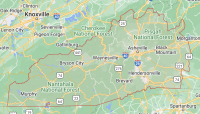Caught in the spider’s alluring web
Spiders are one of the most interesting — and sometimes disconcerting — critters to observe. Especially fascinating, to me, are the various webs they create to capture prey and provide themselves with protection.
Spiders are often confused with insects, which are related to crabs and lobsters and have a skeleton of sorts on the outside of their bodies. Unlike insects — which normally have three distinct body parts (head, thorax, and abdomen) and six legs — spiders have only two body parts and four pairs of legs.
Spiders live mostly on insects, which they subdue with poisonous fangs. Two leg-like structures behind the fangs are often held out like antennae. These probably serve as sense organs. Unlike insects, spiders have several simple eyes (sometimes as many as eight) rather than compound eyes.
The success of spiders as a group can be attributed to their ingenious use of silk, which is made as a viscous plastic in special glands located in the lower abdomen. The liquid silk is gathered in nipple-like organs called spinnerets. It solidifies when drawn through the small spigots on the spinnerets — a process similar to that used in the production of synthetic fibers. Authorities maintain that spider silk is actually stronger than steel of comparable thickness!
From this elastic “steel” spiders weave complex webs that appear in almost every design imaginable. The most complex spider webs are created by the garden species known as orb weavers. These consist of a series of radiating lines that support a spiral thread covered with highly sticky droplets, which attract and ensnare insects.
Every few days the orb weaver creates a new spiral thread so as to keep it fresh and sticky. While waiting for insects to come along, the spider resides in a silken retreat of rolled up leaves off to the side of the web. Vibrations along a special silk line leading from this retreat to the sticky spiral thread let the orb weaver know that dinner’s ready.
Related Items
In the early morning after a heavy dew, beads of moisture collect on the spider webs constructed in grassy meadows, making them easy to spot. After the sun dries the dew later in the morning, the webs are still there, of course, but are much harder to locate.
Many of these meadowland webs are constructed by sheetweb weavers, which are spiders that usually have a pattern on the abdomen. Take a closer look at these glistening structures and you’ll observe that they’re shaped like domes or bowls. Two of the most interesting of the sheetweb weavers found in the eastern United States are the ones known as the hammock spider and the bowl-and-doily spider.
Hammock spiders construct a web shaped like a hammock. The spider stays concealed in a far corner of his creation until he nets an insect. Leaves that fall into the web are sometimes used as hideouts as well.
The bowl-and-doily spider constructs a shallow silken bowl about six inches across that sits directly upon a doily-like flat maze of threads. The bowl is clearly designed to trap insects. When they fall into the bowl, the spider bites them from below and wraps up their bodies in the silk for safekeeping. The purpose of the doily is less certain, but it perhaps serves to protect the spider from attack from below by predators.
George Ellison wrote the biographical introductions for the reissues of two Appalachian classics: Horace Kephart’s Our Southern Highlanders and James Mooney’s History, Myths, and Sacred Formulas of the Cherokees. In June 2005, a selection of his Back Then columns was published by The History Press in Charleston as Mountain Passages: Natural and Cultural History of Western North Carolina and the Great Smoky Mountains. Readers can contact him at P.O. Box 1262, Bryson City, N.C., 28713, or at This email address is being protected from spambots. You need JavaScript enabled to view it..









